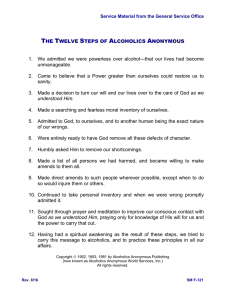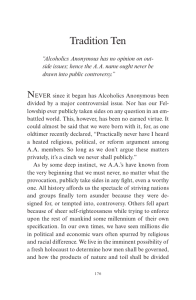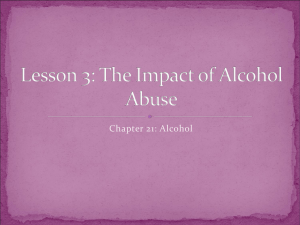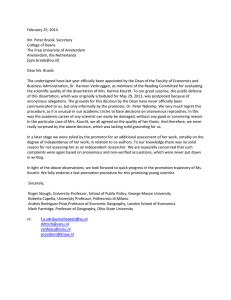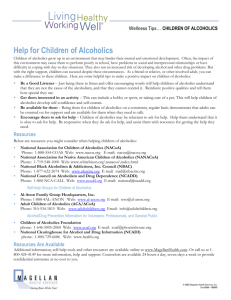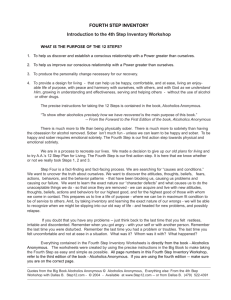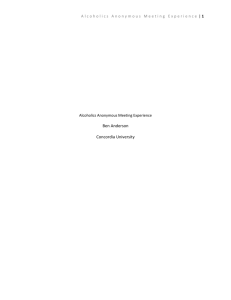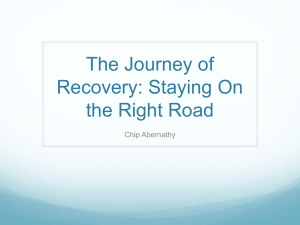To View PowerPoint Click Here
advertisement
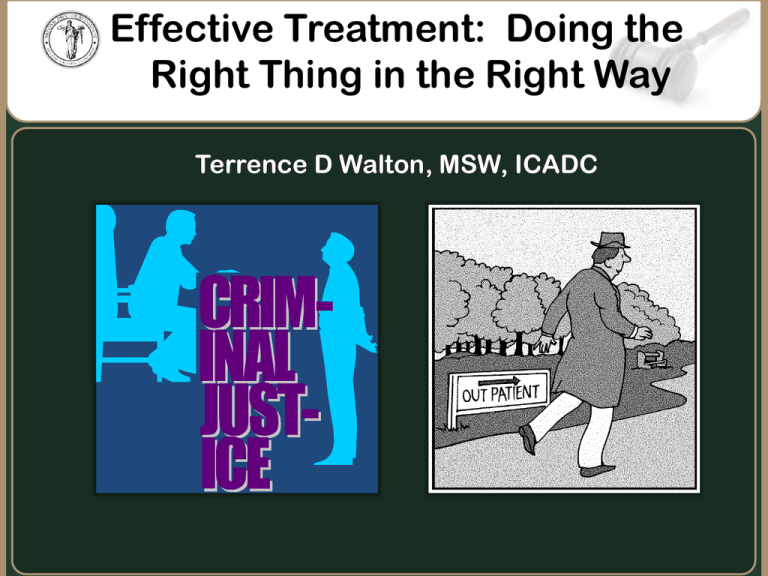
Effective Treatment: Doing the Right Thing in the Right Way Terrence D Walton, MSW, ICADC Morality Modal Alcoholics Anonymous Treatment Disease Concept Temperance Model Manuals Science EBT Outcomes Best Practice OUT IN Process Effective Treatment Practice Process Full Continuum of Care Adequate Duration Sufficient Intensity Stage of Recoverybased Design Policies & Procedures Team Interactions Evaluation Practice Culturally-appropriate evidenced based treatment practices Practitioners trained and coached in manual-guided delivery Services dominated by those that have been rigorously tested Sources of Information Sources of Information Four Big Alcohol Studies • • • • • Randomized Controlled Trials Project MATCH COMBINE Study UK Alcohol Treatment Trials Mesa Grande Project (361 clinical trials analyzed) A Big Resource National Registry of Evidencedbased Programs and Practices: www.nrepp.samhsa.gov. Other Evidence Based Practices 1. Behavioral Couples Therapy (BCT) – Not well tested in an offender population 2. Brief Interventions (5 or fewer sessions) – Not appropriate for an addicted DUI offender Not Evidence Based 1. 2. 3. 4. 5. 6. 7. Generic Counseling AOD Education Confrontational Interventions Psychodynamic Therapy Solution-focused Therapy Mindfulness-based Stress Reduction Acupuncture Goals of Cognitive Behavioral Therapy (CBT) Approaches 1. Analyzes thoughts, feelings, and actions (behavior) 2. Thoughts drive emotions 3. Emotions drive behavior 4. Identify thinking patterns and stop thinking “errors” from leading to emotional reactions that produce problem behaviors. Key Question Be Skeptical • • Nearly every evidenced based intervention is manual-based. However not every intervention that is manual-based is evidenced based. Motivational Approaches 1. To increase and maintain the person’s motivation to change his or her life 2. Motivate those who don’t want to change 3. Help increase the motivation of the people who aren’t sure 4. Help the motivated maintain their readiness to change 1. Motivational Interviewing: Preparing People for Change – William Miller & Stephen Rollnick (2002) 2. Addiction and Change: How Addictions Develop and Addicted People Recover – Carlo C. DiClemente (2003) Assessing Readiness to Change Pre-Contemplation Contemplation Preparation Action Maintenance Medication-Assisted Treatment 1. To provide relief from withdrawal symptoms 2. To prevent drugs from working (antagonist) 3. To reduce craving 4. To provide replacement (agonist) 5. To provide aversive reactions Medication-Assisted Treatment • • • Naltrexone – Interrupts actions of alcohol and opiates; reduces cravings (Vivitrol) Acamprosate – reduction of alcohol cravings Disulfiram/Antabuse – produces adverse reaction with alcohol use Medication-Assisted Treatment • Methadone – Opiate addiction – reduces craving, Driving mediateswhile using withdrawal symptoms, a legally prescribed medication, helps restore normal functioning (agonist) including methadone taken according to doctor’s orders, • Buprenorphine (Subuxone) similar a toDUI charge can still –trigger methadone, may be prescribed in byall an 50 MDstates with special training (partial agonist) Combining Medications and Behavioral Interventions for Alcoholism • Finding: Naltrexone in combination with medication management sessions delivered by health professionals was at least as effective as psychosocial interventions • Side note: Pathology of multiple DUI offenders will likely require psychosocial interventions in addition to medications Those Missed 92.9% with bipolar disorder 68.4% with depression 100.0% with OCD Does Program include: 1. Blended Screening and Assessment Approaches? 2. Education on Co-Occurring Disorders? 3. Medication Monitoring and Management Sessions? 4. Heavy Utilization of Positive Reinforcement and Flexible Application of Graduated Sanctions? 5. Mental Health Specialists? 6. Agreements with Community Mental Health Services Agencies? Twelve Step Groups What About Alcoholics Anonymous? What about coerced AA participation? What About Alcoholics Anonymous? “Attendance” versus “Involvement” (active participation) What About Alcoholics Anonymous? Seek Alternatives to Mandating AA Using Support Groups in Therapy “The 12 Step Facilitation Therapy Manual” Offer choice (types, spiritual & secular) Be selective regarding approved groups Try to match demographics, lifestyles, and level of substance involvement www.smartrecovery.org Next Steps 1. Identify and adopt evidence-based practices 2. Incorporate medication-assisted treatment 3. Utilize alcoholics anonymous and provide secular alternatives for those with religious-based objections 4. Treat the hard, core alcohol-dependent impaired driver 5. Modify (lessen) treatment requirements if treating non-addicted participants in DWI Court. 6. Stay abreast of latest DUI Court treatment-related research findings
